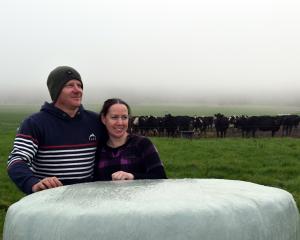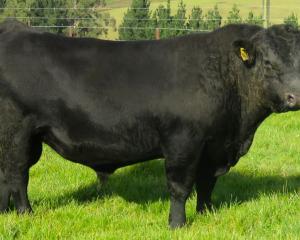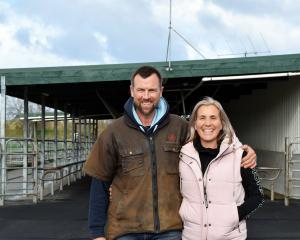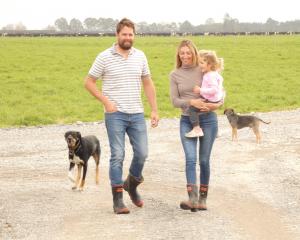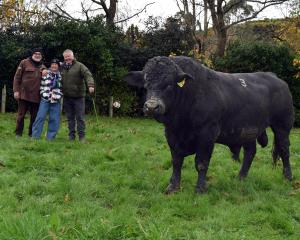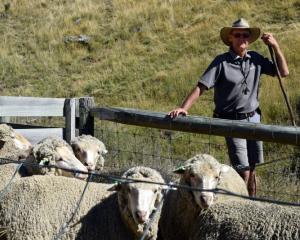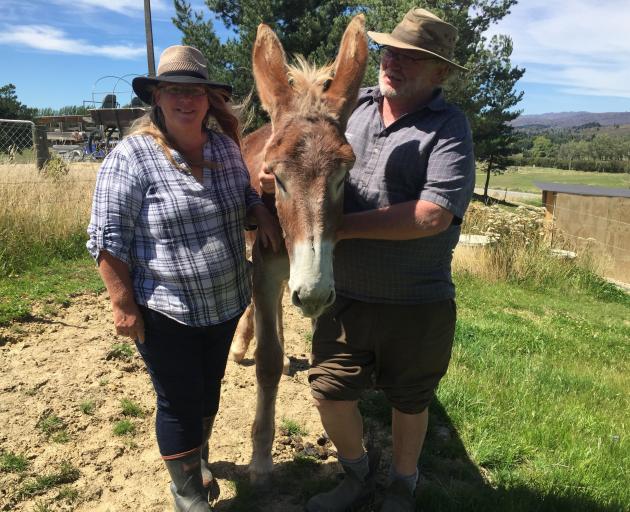
They whisper it into the long, long ears of their young donkey Barney, stud name Awapuni Desert Gambler.
It is a bit of a gamble what they are doing. Barney is a mammoth donkey, a rare breed. If you cross a male donkey — a jack — with a horse you get a mule. If he is mated with a few carefully selected mares, he may help fulfil his owners’ dream: to build themselves a mule team, possibly the only one in New Zealand.
They have another mammoth in the paddock next door at their Earnscleugh property near Alexandra. The breed is so-called because it is big — a jack should be at least 147cm tall at the shoulder — and perhaps because before moulting it is woolly like a mammoth.
Tex, aka Awapuni Texas Gambler, has been a reluctant lover. Relaxed by nature, he has not shown much interest in the ladies over the fence, or they in him; donkeys are noisy and strange creatures to a horse. The Cowies did manage to get him to cover three of their brood mares, and they should have three mule foals by December.
However, unless Tex lifts his game, they may have to go down the artificial insemination route in the future. So they are pinning hopes on Barney. At only 14 months old, he is just a baby yet, and destined to be one of the founding jacks for the Cowies’ Central Mammoths and Mules stud.
With a backdrop of barren, rocky hills and mostly blue skies, their Central Otago home is not unlike the United States Badlands. Both donkeys are from the American mammoth donkey line, from Maltese, Poitou, Andalusia and Catalan breeds and developed in the US.
"You won’t get much change out of $40,000 to import one," Mr Cowie said.
Tex and Barney are the progeny of donkeys that were imported from the US into New Zealand by Bryan and Jenny Clausen, of Taupiri, in Waikato.
Their Awapuni Donkey Stud was established more than 25 years ago and focused on small English and Irish donkeys, until about 10 years ago, when they brought in two mammoth jenny (female) donkeys from Texas, followed by three jacks at various times. They are a rare breed in the US, and rarer still in New Zealand.
Mules were used in New Zealand in the early days for all types of farm work, but with the advent of machinery and tractors, slowly the hardworking animals started to disappear, as they did in the US.
The Cowies are well-known, long-time cavalcaders and trekkers. In fact, their singing, barrel-racing daughter Casey Evans, who farms near Owaka, was born during one.
"I was nine months pregnant and getting up a ladder to get on my horse, and I thought I’d peed my pants. But as I went along, I realised my waters had broken," Mrs Cowie said.
After a rushed trip to Dunedin in a rattly old truck, Casey was born 24 hours later.
Loading the kids into the wagon — the Cowies also have two sons, Jacob (20) and Zachary (18) — is just something they have always done as a family. But in recent years they have been looking for a new challenge. They got interested in donkeys and mules while doing the Bluff to Picton wagon trip.
"We first saw two mules in Hanmer Springs in 2007, and we just fell in love with them. We stopped again four years ago on the coast to coast trek. We just had to see them again, and that sealed the deal. We just had to have them."
They set out to learn as much as they could about donkeys and mules, which involved a trip to the US.
"Tex’s dad was imported. I rode his auntie through the streets of Las Vegas."
The saying "stubborn as a mule" is quite true, apparently. Mules had a strong self-preservation instinct, Mrs Cowie said. And never get on the bad side of a donkey. Both had phenomenal memories and intelligence.
"If a mule doesn’t like you, and in fact love you, right from the start, they’ll never like you. A horse, you can get round them more. You do not treat them the same way as you do horses."
The way to feed them was different. Horses should not be allowed to get overweight, but it was particularly critical for a donkey or a mule not to get too fat, because it went straight to their organs and joints and crippled them.
Donkeys and mules were also more agile and could handle truly rugged terrain. They had the peripheral vision of the donkey so they could see all four hooves at once.
Apart from being mad about the long-eared beasts of burden, there was a practical reason why Mrs Cowie in particular was very keen on them.
"With my arthritis, riding a horse is hard work on your hips and joints. Horses rock. Donkeys don’t. They float. Mules float, too.
"After my first time riding a mule, I can understand why older people [in the US] are getting into it. Here, people think we’re mad."
Ultimately, the couple would like six mules: three in front, two in the rear to pull the wagon, and a spare.
"Next time that wagon goes out, I want it to be a team of mules."
They would start training them as 2-year-olds — "just a wee bit earlier than a horse, because were told they’re a bit cleverer than a horse — we’re still learning too, though. You just start gently. You don’t go hard.”
Last year, the Cowies had been planning to spend the US summer at Yellowstone National Park to learn how to operate and drive the mule train that takes trekkers on the trip of a lifetime. Of course, Covid-19 had meant that did not happen. They hoped to go next year.
In the meantime, they would just keeping picking up knowledge wherever they could in this new challenge.
"I’ve done it all. I’ve done the trails. Done trail boss. Done ploughing (vintage horse-drawn).
"I want to do something different."


